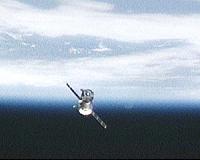 |
Paris, France (ESA) Mar 14, 2011 With almost half of the MagISStra mission behind him, ESA astronaut Paolo Nespoli has not had much free time on the International Space Station. In addition to his heavy workload, he has also been on a special diet. The International Space Station is preparing for a new era without Space Shuttles visiting every few months. The focus is shifting from building it to learning to work and live in space and doing scientific research. "Space is a unique place for many kinds of science," says Christer Fuglesang, astronaut and head of ESA's scientific utilisation of the International Space Station. "Looking up to deep space or down to Earth and conducting experiments benefiting from microgravity or the space environment - reproducing these on Earth is difficult or impossible. "The Station's diary is already stuffed with science, done by the astronauts or conducted remotely. The astronauts also act as test subjects themselves. "How our bodies adapt to space conditions is still one of the most interesting questions we must answer, both for fundamental biology and future space exploration."
Blood, please That means a lot of blood and urine samples, taken regularly, stored in a freezer and sent back to Earth periodically for analysis. Astronauts are also taking hair samples from each other and packing them in the -95 degrees C deep freeze. Reaction tests following a precise timetable map the daily effects of fatigue. Two special watches worn by the astronauts log their movements. Ultrasound scans, electrocardiograms, blood-pressure measurements and electroencephalographs are all part of the daily timetable of the Station astronauts. Their food intake is monitored and the effects of different diets are recorded via blood and usine samples, bone measurements and gas analysis. For instance, Paolo's SOLO experiment is studying his salt levels during periods of high and neutral salt intake. The work is contributing directly to ground studies for maintaining good health.
Science and technology The research aboard the Station is helping to push these materials from development to real applications. The Geoflow experiment is zooming in on complicated flow patterns of liquids to help scientists understand their behaviour - and even our planet's molten core.
Radiation issues To understand the problem, the radiation levels in different areas of the Station are being measured and the doses in dummies are being monitored. In addition, racks of biological samples are exposed outside the Station to the harsh space environment. The Sun is our star, our main source of light and energy. Mounted outside of Europe's Columbus laboratory, SOLAR is measuring the small changes in the Sun's brightness across a broad spectrum. SOLAR is helping us to probe the interaction between the solar energy flux and Earth's atmosphere - of great importance for understanding how our climate works.
Share This Article With Planet Earth
Related Links Life in Space at ESA Station at NASA Station and More at Roscosmos S.P. Korolev RSC Energia Watch NASA TV via Space.TV Space Station News at Space-Travel.Com
 NASA books seats on Soyuz through 2015
NASA books seats on Soyuz through 2015Greenbelt, Md. (UPI) Mar 14, 2011 NASA says it has signed a $753 million agreement with the Russian space agency Roscosmos for 12 round trips for astronauts to the International Space Station. The arrangement will let NASA fly a dozen U.S. or partner agency astronauts on Russia's venerable Soyuz spacecraft between 2014 and 2015 at a cost of about $62.7 million per seat, SPACE.com reported Monday. That's up from the $55. ... read more |
|
| The content herein, unless otherwise known to be public domain, are Copyright 1995-2010 - SpaceDaily. AFP and UPI Wire Stories are copyright Agence France-Presse and United Press International. ESA Portal Reports are copyright European Space Agency. All NASA sourced material is public domain. Additional copyrights may apply in whole or part to other bona fide parties. Advertising does not imply endorsement,agreement or approval of any opinions, statements or information provided by SpaceDaily on any Web page published or hosted by SpaceDaily. Privacy Statement |